Dennis Vowles - On Guard: Protecting Roofs with Garrdal - PODCAST TRANSCRIPT
April 4, 2025 at 10:00 a.m.Editor's note: The following is the transcript of a live interview with Dennis Vowles of Garrdal Corporation. You can read the interview below or listen to the podcast.
Intro: Welcome to Roofing Road Trips with Heidi. Explore the roofing industry through the eyes of a long-term professional within the trade. Listen for insights, interviews and exciting news in the roofing industry today.
Heidi Ellsworth: Hello and welcome To another Roofing Road Trips from RoofersCoffeeShop. This is Heidi Ellsworth and I am here today with Dennis Vowles from Garrdal. Dennis is amazing because he actually has been supporting Western States, the roofing industry and we got together and we decided we need to do a podcast. We need to talk about Garrdal and everything that's going. So I am really, really excited to have this conversation today and learn about rooftop accessories, a lot of stuff that I'm not always aware of. And I think it's going to be very informational for all of you out there. So Dennis, welcome to the show.
Dennis Vowles: Thank you.
Heidi Ellsworth: So Dennis, before we get going on rooftop accessories and a lot of the great things that you do, I would love it if you could introduce yourself, tell us a little bit about your history in roofing and then we're going to get into talking about Garrdal.
Dennis Vowles: I'm Dennis Vowles. I've been up and down on roofs for 40 years plus. Started in Canada. I'm from London, Ontario originally and moved to the U.S. in the nineties. Was a general contractor here and finally worked my way away from that after complaining every time I had to put a retrofit pipe flashing onto a roof. Most roofers in Canada, we would cut up two, three in ones because nobody trusted what was out there or they'd reuse the old one, which is not a great solution. So I continuously looked and looked and looked. I was always web searching for alternatives to flash around obstacles that pipes put into way like electrical wires and couldn't find it, couldn't find it, couldn't find it. And finally thought, "Well, why don't I come up with something?"
And that was when the idea for Garrdal came out. It's actually named after my sons Garrett and Dalton. So it's G-A-R-R-D-AL. By the time it was put together and everything was done and the tooling was cut, sales started in, it was either late '17 or early '18 and now we've got 1,300 dealers nationwide and we're opening up into Canada. We're in every dealer that has multiple stores nationwide we're in except for two. So a SKU can be found, even if a store doesn't stock it yet, we're in their system so they can order it for the roofers.
Heidi Ellsworth: That's great. And so it's kind of like going home, going back into Canada, huh?
Dennis Vowles: It's a little bit different. There's a lot more rules up in Canada that you got to follow and shipping is insane up there.
Heidi Ellsworth: But there's obviously a demand for it. And maybe can you talk just a little bit about your product? I know you just started sharing what you were frustrated with and what you were looking for, but just to let everybody know before we get into all the other questions, just explain the functionality and how your product works.
Dennis Vowles: Well, on a shingle roof, there are standard pipe flashings that just get pushed over a plumbing vent or other pipes, but oftentimes, you'll have wires in the way or some kind of a concentric pipe hood or who knows what. Roofers are always finding ways to use it. And you can't push a pipe flashing over top of those pipes. This is designed to go around those obstacles rather than over them. So it's two parts that they nest together and there's seven inches of overlap, UV resistant. The brand names of the materials are Copaline and Santoprene, so they will last decades longer than any shingle roof. They're designed to be outside. Extreme cold, extreme heat doesn't bother them and this will go around those obstacles and you don't have to worry about callbacks. Got to remember to put sealant between the two parts though.
Heidi Ellsworth: That's what I was going to ask. So sealants between the two parts. Having been up and down roofs, been a contractor, invented this great product, what are some of the things contractors should look for in rooftop accessories?
Dennis Vowles: First off is tolerance of extreme temperatures. There was a lot of research went into the materials that we use. At first we were looking for a metal base, but since the opening doesn't close, because it's two parts, it's not a closed circle that seals around the pipe until it's assembled. If we used metal, it would add a lot of weight because it would have to be quite thick to support it. And then the engineer that I was dealing with helping to design it, he said, "Why not plastic?" And I was averse to plastic because I was shingling roofs back when, if it was 40 degrees out and you hit a plastic accessory with a nail, it broke. And if it was hot, you go back the next day and the plastic vent you put on was sunbleached already.
These things were not designed to be in the hot or cold. And he kind of chuckled that and he said, "Plastics have changed in the last 40 years." He said, "We can make it bulletproof and see-through and that's the same product." I thought, "Oh." He said, "So why not tell me the properties you're looking for and then we'll come up with what type of plastic you're looking for." And that was how we settled on Copaline and Santoprene. UV resistance, not an issue. Working in the heat, it'll operate at 210 degrees.
Heidi Ellsworth: Wow.
Dennis Vowles: And extreme cold, it's I think down to minus 70 and that's if you're hitting it with something, it'll go to minus a couple hundred I guess if you're not hitting it. The materials are designed to be in those extreme temperatures. So that's something that a roofer needs to look for is, will it tolerate the conditions or the climate that it's going in? Ease of installation, even as a contractor, if I was subcontracting a roof, I never let my subcontractors install around the electrical mass, the available flashings there, because frankly, they made a mess of it. I would do it on my own and even though I knew how to do it, it's still several minutes and after a competitive split boot is installed, the homeowner's eyes go directly to it because it doesn't look like new construction. It looks like it's Frankenstein went up there afterward,
Garrdal looks like new construction from the ground. It looks like a one-piece new construction flashing. So that's something to look for. How's it look? How versatile is it? Does it tolerate the different climates? Does it install easily and does it install quickly? Garrdal installs with just eight nails, four on the lower sealant, four on the upper holds it in place. Another added bonus is, it can be used for repairs and a lot of roofers who do insurance work, that's something that's really important, especially in a matching state. You can repair a foul pipe flashing with Garrdal without having to replace any of the shingles. So when you do the repair, the roof still matches. So if that homeowner becomes a customer of yours, there's no battle with an adjuster over the roof wasn't matching when the next storm hits. It does match, because you don't have to replace any shingles when you repair a bad flashing with Garrdal.
Heidi Ellsworth: With all the storms and everything that's going on, you're hitting all the marks because, first of all, I haven't seen this much snow in a long time on the West Coast and we have tornadoes and hail and everything going on. So you need this kind of product on the roof.
Dennis Vowles: Usually when baseball season starts, that's when we really kick into high gear because a lot of the storms start at the same time. We're consistent year round. Half of the nation keeps working all year round, full time. Just part of the nation hibernates when it gets cold.
Heidi Ellsworth: I know you've already talked about this, the two-part pipe flashing and how it goes together and you've talked a little bit about the different uses, but I would love to hear, what are some of the many different ways that it's been used on the roof? It seems like it can handle a lot of different obstacles, so give us some fun examples.
Dennis Vowles: Well or iginally when we were researching where it could get used, we came up with about a million homes each year in the U.S. that would get re-shingled and have an electrical mast on them. There's about six million roofs that get re-shingled a year and approximately one in six has an electrical mast coming in through the roof. So that was the original target. However, that will get surpassed by concentric pipes for high efficiency furnaces. The super high efficiency furnaces get vented out the side of the house, but the ones that most people buy get vented out of the roof. There's also a use for it with a vent from a tankless water tank. We've got a lot of people in Oregon and there's lots of states that have radon remediation equipment that comes out of the roof and this will go around those.
I ran into a guy in Pinetop, Arizona at an ABC Supply store who the contractor uses Garrdal to dry in the metal roofs to stop the moist air from getting between the roof deck and the metal that he's going to install. He closes out all the vent holes in so that the heat can't transfer because it's 30 degrees overnight and then it's 85 in the day. So there's a lot of condensation. So people will always come up with ideas for it. Even there's a fellow with a platform pro is a company that he installs swamp coolers and elevated condensers mostly in the South that are rooftop mounted and he closes in the supports with Garrdal. People will always come up with an idea. If you can't get over it, you can always get around it.
Heidi Ellsworth: Well and I want to go a little bit deeper too on, things have changed in 40 years with the different things that are on the roof. When you're looking at all of the satellite dishes and solar arrays and water tanks and all different kinds of things, what have you seen over the last 40 years on all of these different items that are now on the roof and need to be covered and protected? Share a little bit of your history on that, what you've seen.
Dennis Vowles: Well or iginally when Garrdal was designed, the base was large enough that it would be able to contain the bracket from a satellite dish. However, satellite dishes in a handful of years, only the ones that are up on a roof now will remain. The rest of them just send the signal straight to the television or straight to the TV or through your internet. So we won't be having a lot of people buy it for satellite dishes in the future. Between concentric pipes, because they don't make low efficiency furnaces anymore, they only make ones that get vented out the side of the house or through the roof if it's a gas appliance, so that will overtake the amount of these that are getting used.
I figure, by the time another decade, it'll be about one in three roofs needed for an appliance vent or an electrical mast. And even if it's in regions where all the electricity is underground, it's not underground out to the outbuildings, garages, sheds. There's still uses for it. So the uses are going to be there for a long time and that's good for me. Those uses will be here longer than I will.
Heidi Ellsworth: So now I'm a little bit interested in solar. What are you seeing with the solar rays on the roof on the racks, is Garrdal something that can be used there?
Dennis Vowles: I had a couple of solar guys ask me about using it for solar or designing a smaller one for solar. The obstacle that I've run into or I guess the hitch, is that there are very few circular standoffs for solar. In fact, I've only found one company right now that's got circular standoffs. If somebody would reach out and say, "There's this company, this company, this company," but most of them now it's a rail with the support that stands up and it's a flat piece of metal that folds onto the panels now. So if there's a way where there's more standoffs that are roof mounted, lots of circular standoffs on the ground, but not on a roof. We will get another product out there that's smaller if the demand is there. We're in the process right now of making another Garrdal that's designed for really steep roofs. It just changes the angle so it's easier to install on a really steep roof.
Heidi Ellsworth: I'm just curious, myself being an entrepreneur and with you being an inventor, an entrepreneur, how cool is that? Is it just a constant thing that you're thinking about of what's that next application or adjustment to the Garrdal to make it work on new things and also, like you said, things that are actually leaving and now being replaced in different ways?
Dennis Vowles: Great question. We've got five ideas or five irons in the fire for things to expand upon that are still roof-related accessories that we can develop into using better materials and sell it through the same network. There's always additional ideas out there. It's just who's the guy that's willing to take on the expense to put the idea to market and take on the headache to sell the idea to market?
Heidi Ellsworth: Exactly. But also you're in a unique position because you've been there, done that. So that's a lot different than sometimes you see people coming in with ideas and they've never really had the experience. You have both.
Dennis Vowles: One in 1,000 can come up with an idea and a lot less than that will chase that idea. The first five years during development and the first couple of years selling it, you got everything in it.
Heidi Ellsworth: I love it. I love-
Dennis Vowles: I guess that's with any kind of self-employment, but finding a support network is always a challenge.
Heidi Ellsworth: It is and I love that you named it after your two sons. I think that's really cool. And that's another, I guess, bonus of being the inventor, you get to name it whatever you want.
Dennis Vowles: And one of them is a roofer. He's a commercial roofer [inaudible 00:14:43].
Heidi Ellsworth: Oh, I love it. That is perfect. So Dennis, how can roofing contractors get involved? I know you mentioned so many places of distribution, but we're going to have contractors out there who are listening to this and saying, "I want to try that. I want to try it on the roof." How do they get their hands on it?
Dennis Vowles: The easiest thing is go to our website. There's a dealer locator. You can search by zip code, just punch in your zip code at Garrdal.com. On the Find a Dealer page, put in your zip code and it'll show you who's in your region that's stocking the product. Aside from that, if there's a related store or if there's a store that you use, you got a 95% chance that even if your local dealer doesn't stock it, well, he calls the guy 60 miles away and transfers stuff in. With all of the big players in the industry, that's what they do. And even a lot of the smaller ones, they distribute among them. Call I had this morning in Georgia, there's a company that that's what they do. They buy the pallet in one area and they just redistribute on their own to the other stores that are in the region.
Heidi Ellsworth: We've been hearing a lot about that lately too. Distribution is doing a lot of moving.
Dennis Vowles: It's a lot easier. We find it a bit of an obstacle because we don't know what stores have them in stock at times. Or we'll get a call from a store trying to order it and then we look in our record and say, "Oh, you've already got them." "Well, we transferred them down the road." "Well, okay."
Heidi Ellsworth: "We'll send you some more. No problem."
Dennis Vowles: Exactly. Yes.
Heidi Ellsworth: That's never a problem.
Dennis Vowles: With 1,300 stores in the nation to buy it, there's some pockets where they're a long way away from a dealer and if that's the case, we will sell direct to a roofer, but only if there's not a dealer in the region that can help them. So Wyoming and Montana, there's some areas where people are still 40 and 50, 60 miles from a dealer, so we don't want to step on the toes of our dealers, so we will send it across the country. And then there's several of the dealers that also have a web presence where they do online retailing as well and some of them are at Amazon. You find numerous websites where some of them are, because that's what they do. They've got an online network of retailing.
Heidi Ellsworth: If you're looking for these, you can find them. Obviously, go to the website, find the dealer. We have information on RoofersCoffeeShop in the Garrdal directory. So Dennis, any last thoughts? I'm just curious, because you've had a lot of experience. What are some of your thoughts about going forward in roofing the next couple years, decades, whatever it may be? What are some of the things you see changing about roofing or what are some of the things that you're imagining can help the roofing industry?
Dennis Vowles: What would help it most is if there was a way to force-feed information to people. Well, synthetic underlayment has been around for two decades and there are still pockets of the nation that the roofers don't know what it is. It's very slow to change and the knowledge isn't always there. I used to struggle, even with the people who worked for me as a contractor, the employees give you resistance to learn things. Start off, read the pack of shingles. It'll tell you a lot of information. And from there, search out those new ideas or upcoming products or different products. There's less than 10 things that go on a shingle roof when you replace it. Know all 10 and there's two or three different varieties of each of those 10 things or there's dozens of different shingles. Know what else is out there. Learn. Knowledge saves you a lot of time.
Heidi Ellsworth: That makes me happy because that's exactly what RoofersCoffeeShop is trying to do. So that's great. We're trying to get the word out there.
Dennis Vowles: And here I'm not good with technology.
Heidi Ellsworth: I know. But you made it and we're on a podcast.
Dennis Vowles: Thanks for having me.
Heidi Ellsworth: Who knew? Who knew when we started in this industry that we'd be on a podcast this many years later? Dennis, thank you so much for being on the show today. I so appreciate you and thank you so much. We got to mention this podcast was part of a donation to Western States, to the Davis Foundation, which I'm also on. And thank you for supporting them. You are amazing to do that.
Dennis Vowles: Well, thank you for having me, Heidi. We'll be there again in September.
Heidi Ellsworth: Oh, we'll be there too. So you'll have to stop by the booth and we'll get you on the soundstage.
Dennis Vowles: Oh, great.
Heidi Ellsworth: Okay?
Dennis Vowles: All right.
Heidi Ellsworth: That sounds great. Thank you. Thank you so much, Dennis and we'll see you again on here.
Dennis Vowles: Great. Thanks, Heidi.
Heidi Ellsworth: And thank you all for listening. This is a great podcast. This is the kind of stuff I love, learning about products that are out there that can make your life easier. The history, it's just so rich. So be sure to check out all of our podcasts because we do this a lot under the Read, Listen and Watch section of RoofersCoffeeShop under Roofing Road Trips. Also, be sure to check out the Garrdal directory on RoofersCoffeeShop where you can get more information plus get to their website. And finally, be sure to check out Roofing Road trips on your favorite podcast channel. Be sure to subscribe and set those notifications so you don't miss a single episode. We'll be seeing you next time on Roofing Road Trips.
Outro: Make sure to subscribe to our channel and leave a review. Thanks for listening. This has been Roofing Road trips with Heidi from Therooferscoffeeshop.com.

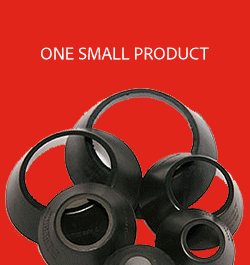






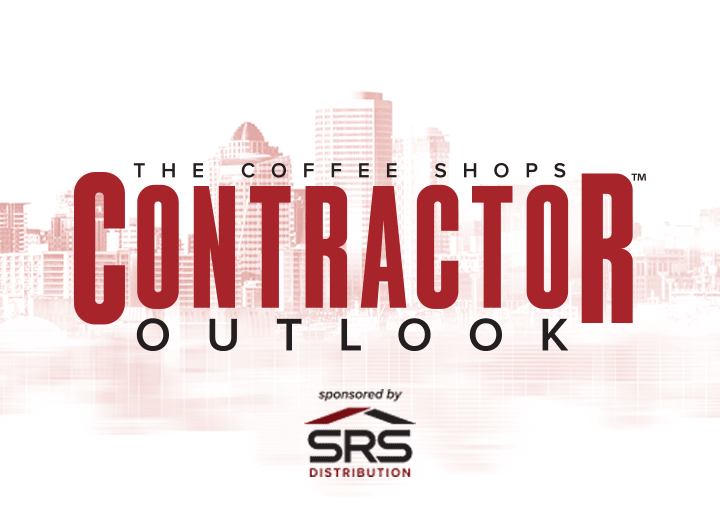

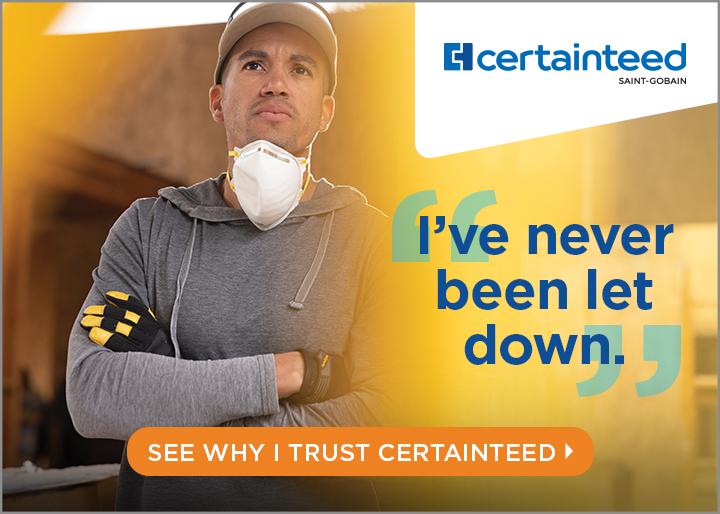
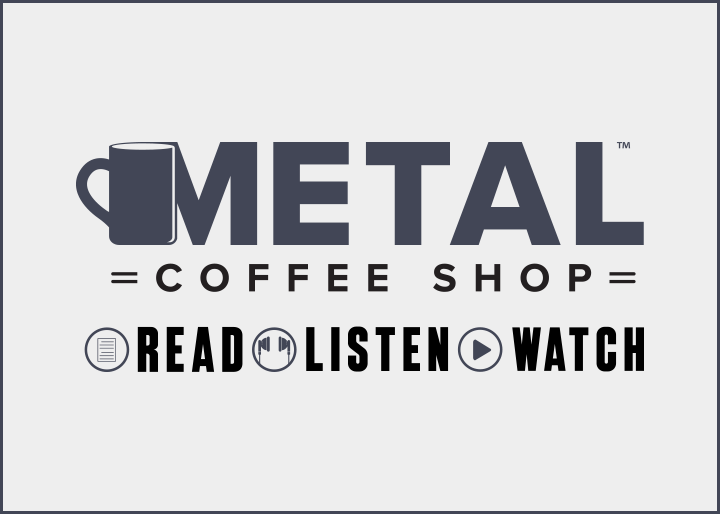

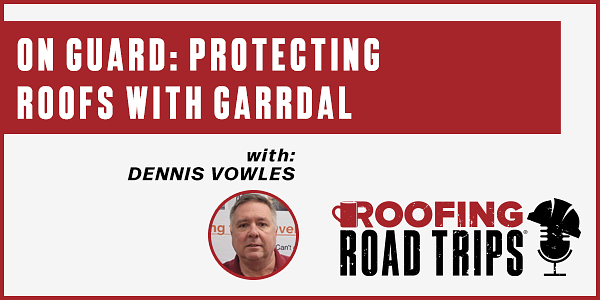






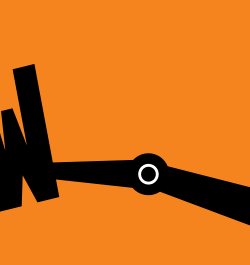


Comments
Leave a Reply
Have an account? Login to leave a comment!
Sign In